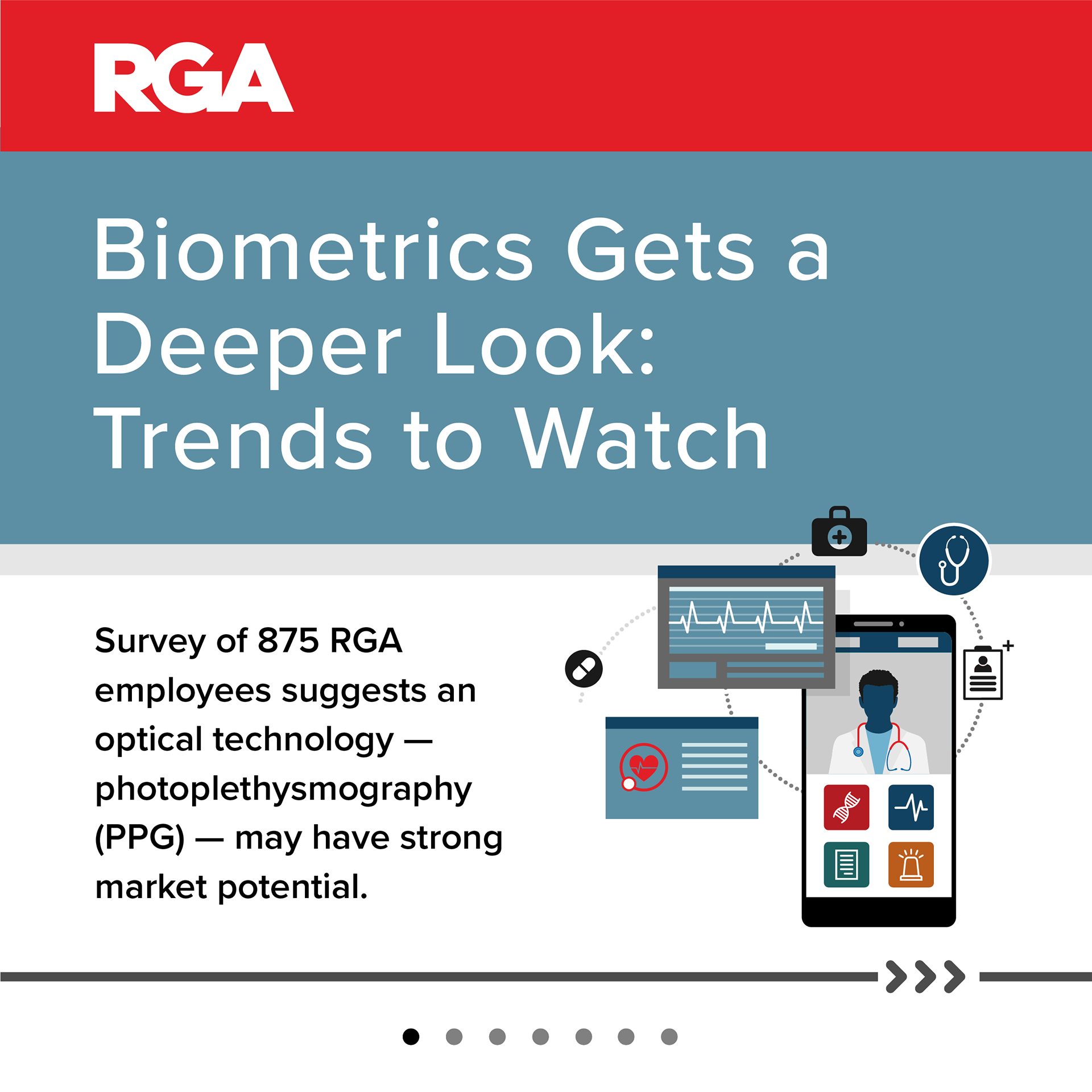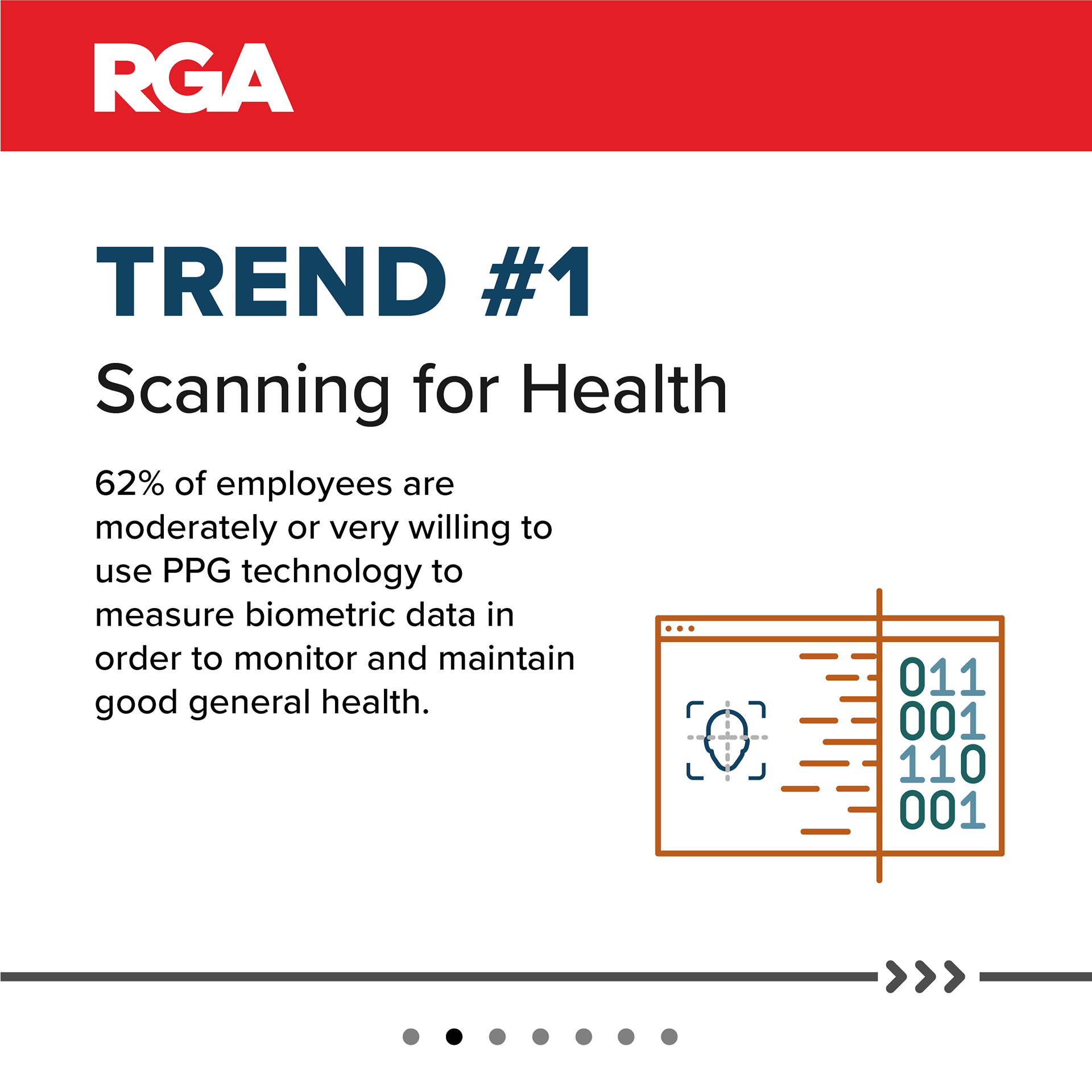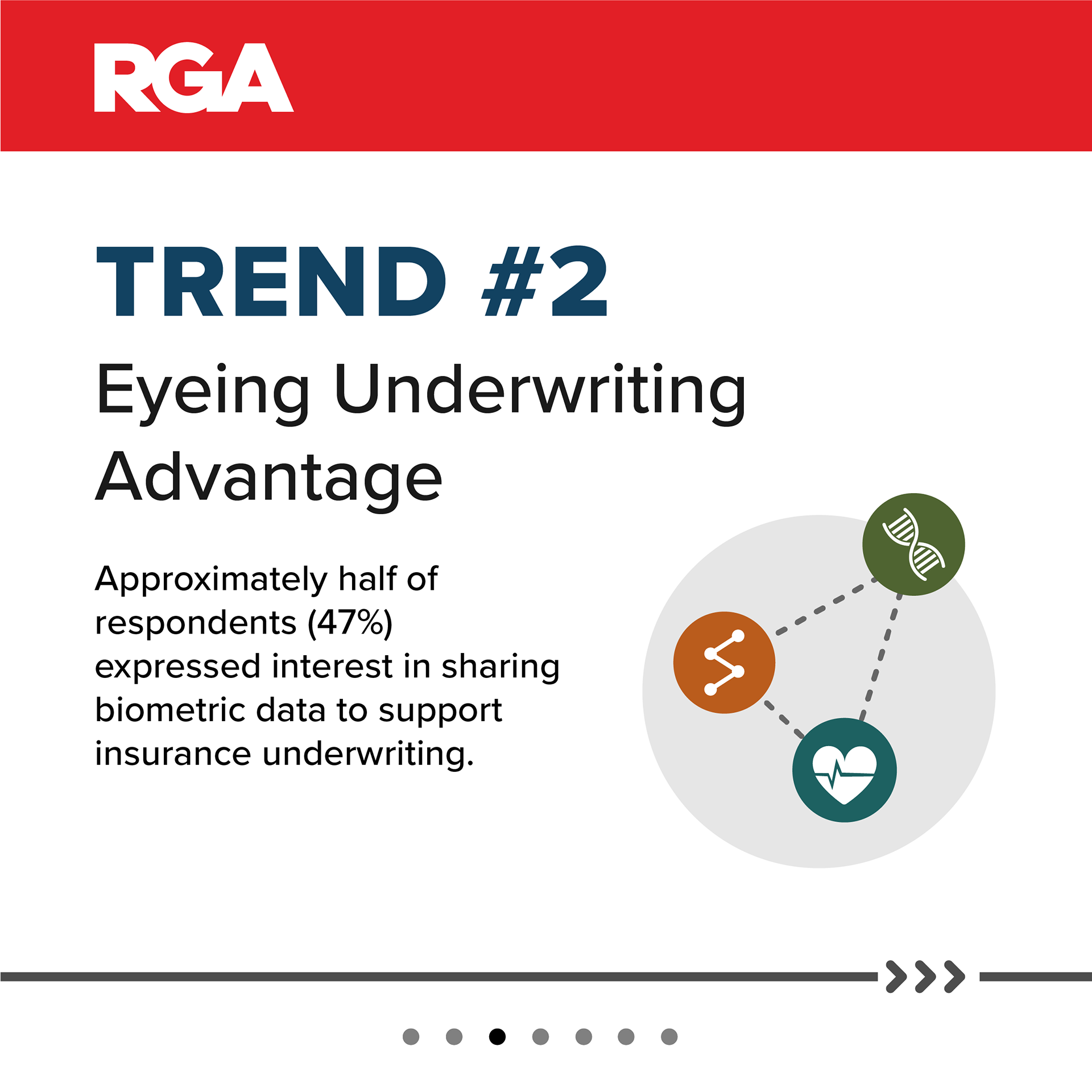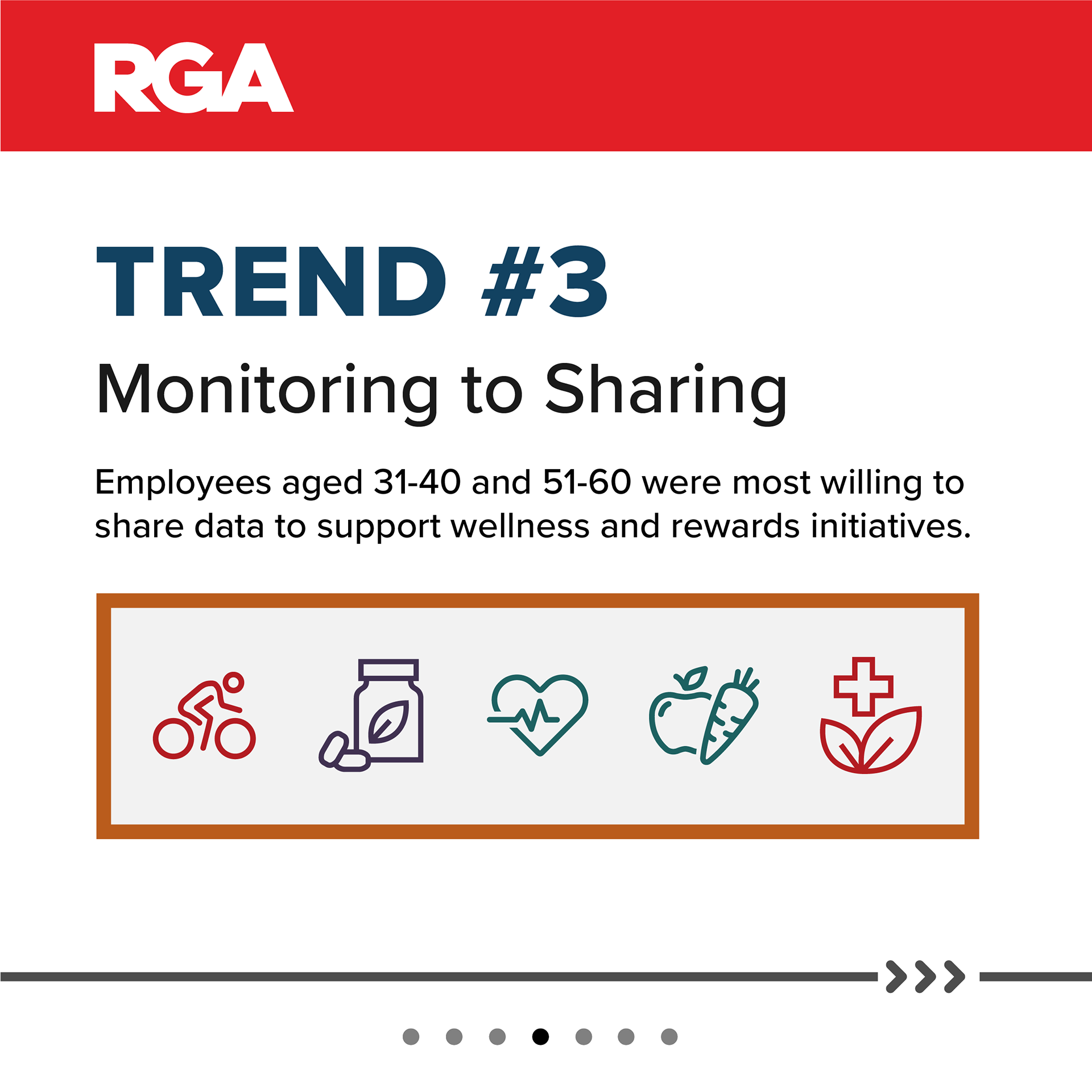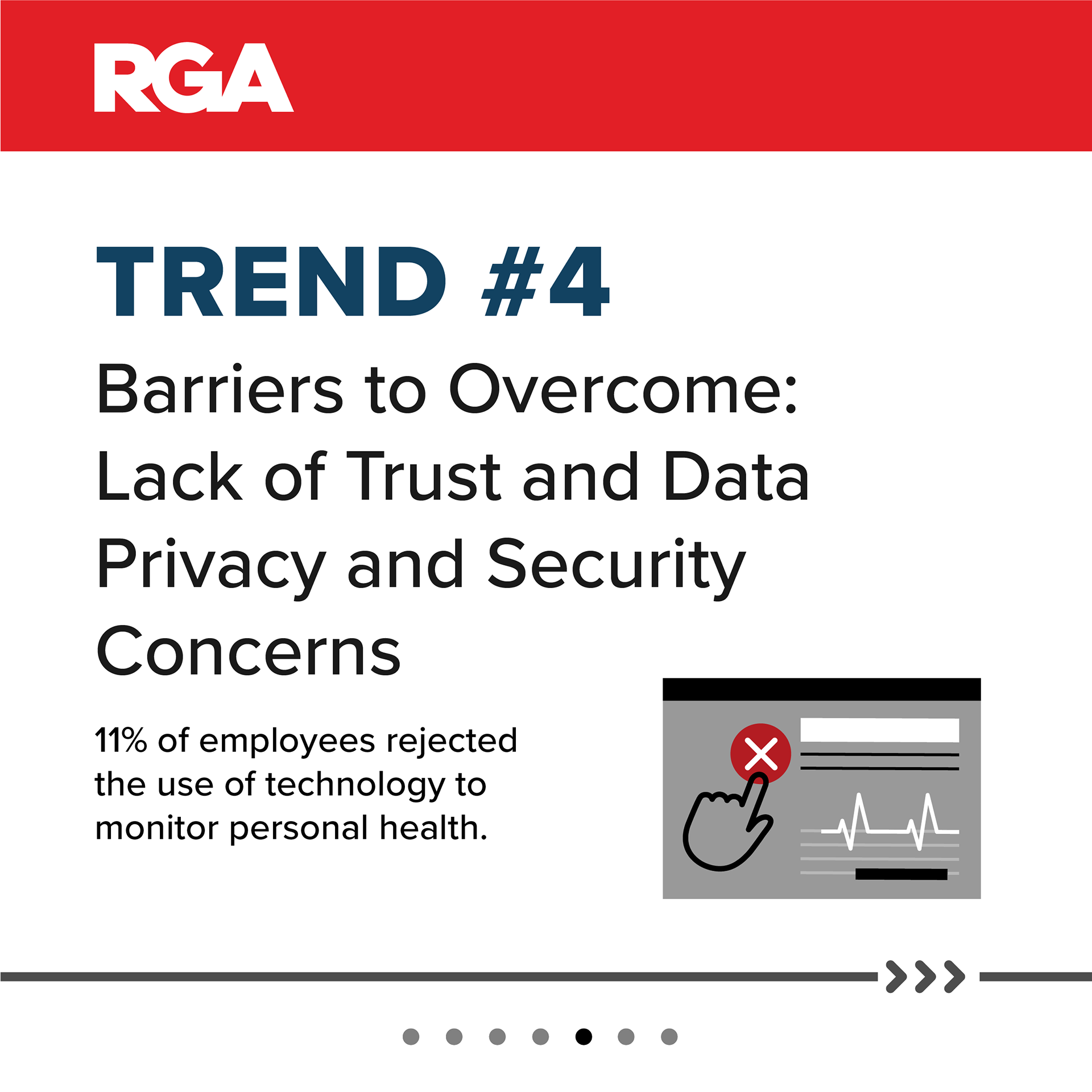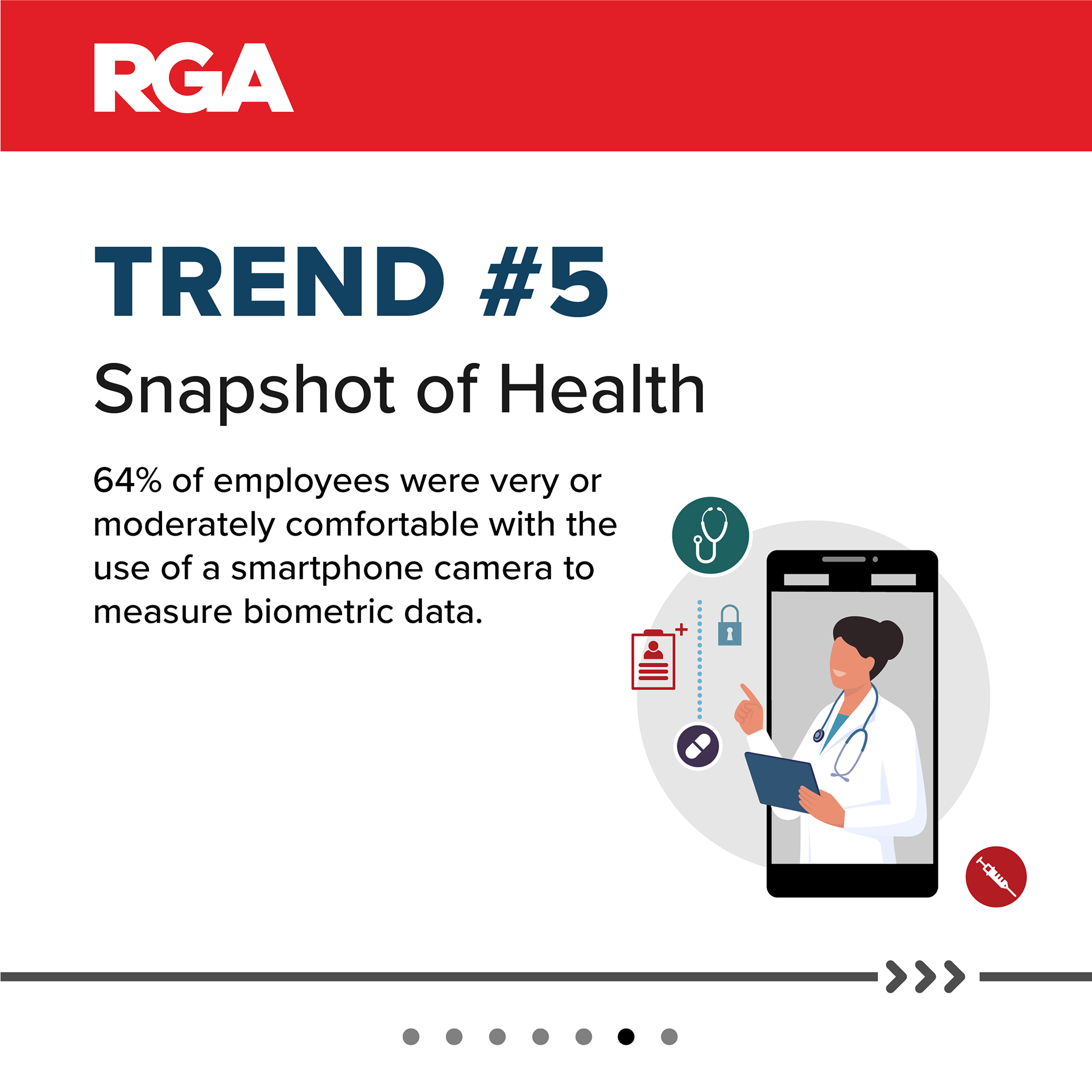With a sweep of a smartphone camera, waves of infrared light penetrate the skin and beam back biometrics based on blood flow
It sounds like science fiction, but this electro-optic technique – photoplethysmography (PPG) – is real and the subject of rising insurer interest due to its affordability and array of potential digital applications.
New survey results from RGA suggest consumer openness to the technology and exciting potential applications to improve health monitoring and disease management, as well as inform insurance processes such as underwriting.
PPG is distinct from facial analytics, although both optical technologies rely on human skin analysis and are already in use in consumer electronics such as cameras and wearable devices. The difference? Unlike facial recognition systems, the PPG scanners built into both consumer and clinical devices do not collect data based on physical features. PPG looks at what lies beneath, detecting minute volumetric shifts in the small blood vessels just under the surface of the skin, from fingers and wrists to ear lobes and faces, whereas facial scans rely on personal appearance to confirm or categorize identity or evaluate health status.
Signals Under the Skin
The non-invasive nature of PPG technology is a large part of its attraction. The technology relies on low-intensity infrared light that is absorbed or scattered based on blood flow levels to create a personalized picture of health. After detecting the intensity of light wavelengths, the scanners apply computer-based pulse wave analysis to convert this data into measures of heart rates, respiratory function, and oxygen saturation levels. Other important parameters such as heart rate variability and mental stress levels can be derived, and it may even become possible to determine blood pressure, glucose level, or hemoglobin parameters important to the insurance industry.
RGA surveyed 875 employees worldwide to assess attitudes towards the use of PPG technology to capture biometric data for wellness programs and/or underwriting. The survey results offered some intriguing insights into consumer sentiment, both positive and negative, although the internal RGA sample is likely not representative of the general population. More than 60% of respondents were moderately or very willing to use PPG technology to monitor and maintain good personal health. Overall, half of all respondents also expressed interest in sharing the same data as part of the underwriting process and to reduce life and health insurance premiums. In addition, 64% of all respondents were either very or moderately comfortable with the use of a smartphone camera for a one-minute period to capture this data – while only 9% expressed discomfort with the time to complete the assessment.
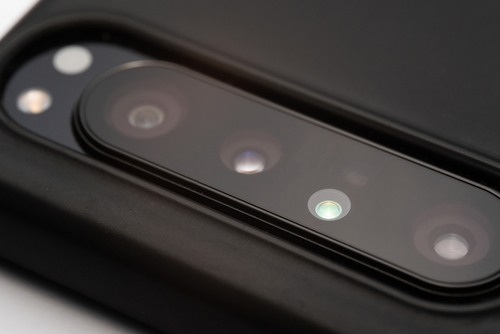
At the same time, more than one-tenth of respondents completely rejected PPG, while a wider group of more than a quarter indicated either a low level of willingness and/or refusal to consider the technology to monitor personal health. Within these groups, personal privacy, trust, and accuracy were leading concerns, with worries about data security and misuse being highest in the Americas.
The findings suggest perception problems must be addressed if insurers plan to adopt this technology.
See also: What is Wellness and Why Does It Matter to Insurers?




